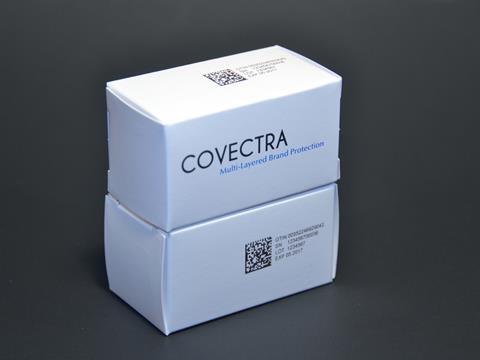
Steve Wood, CEO of Covectra Inc, sets out his vision of an industry that harnesses serialisation to deliver better supply chain efficiency and patient outcomes.
As the global pharmaceutical industry implements its serialisation to meet governmental regulatory requirements, other opportunities exist for pharma companies to realise other business benefits. The main driver for serialisation is to provide greater integrity to the supply chain, but other meaningful business benefits can be obtained from serialisation.
In addition to tightening up the supply chain and channels of trade, serialisation can provide great efficiencies for processing shipments, and knowing what specific packages are included in shipments down to the lowest saleable unit. Tracking information can be updated continuously and provided to brand owners and supply chain partners on dashboards or on mobile applications. These developments in enhanced Track & Trace can be employed to more quickly and accurately detect diversion of product to unauthorised regions.
To combat counterfeiting, new authentication technologies now exist for linking serial numbers to security features that are unique to each package in order to detect possible replication of serial numbers by counterfeiters.
Despite increases in the quality of pharmaceutical manufacturing, there will periodically be a need for recalls of product. Serialisation can be used to provide for more selective identification and notification of product to be recalled, and can also be used to more quickly investigate the causes for the manufacturing problem.
Expired product is now returned for credits in accordance with supplier contracts, but in some cases, it is difficult to accurately associate the selling prices for specific product. Interfacing serial numbers with ERP systems can provide accurate pricing and shipping information for specific products. Serialisation can also help to verify that the goods being returned are authentic.
Statistics on medication adherence have revealed that on average only 50 per cent of the medications are not taken as prescribed, thus severely limiting the therapeutic effect of the drug. Applications employing serial numbers can be used to establish a means for patients’ recording that a medication has been taken, and if not, the prescribing physician or designated care giver can intervene. Adherence during clinical trials is very important to ensure the entirety of the drug trial. Patients enrolled in the trial can be provided with an easy to use mobile application that is programmed to remind patients when the drug should be taken, and data can be collected to determine overall adherence of all patients. Given the cost of drug trials, brand owners can use this methodology to ensure that patients are adherent.
To enhance the overall experience and outcomes of a patient, communications programs can be developed that require patients to register for product promotion programs such as coupons. Webinars can be made available in exchange for patients providing serial numbers of their current prescription. Brand owners can benefit from this direct communications channel with patients given the amount of unfiltered information that can be obtained.
More attention is now being given to the concept of ‘The Connected Enterprise’. In the pharma industry, great benefit can be obtained by linking units of an organisation, including manufacturing, packaging, supply chain, finance, and sales/marketing. A serial number can be used as the critical enabling technology so that the life of a product can provide information such as when it was made, raw materials used, when and where is what packaged, when and how it was shipped, at what price, and to what region. Additionally, with end user patient communications programs, timely and accurate marketing data can be obtained directly rather than needing to purchase this data from market research companies.
Now that much of the pharma industry is well on its way of implementing serialisation of its packaging lines, a return on investment can be obtained by developing business benefit programs using these same serial numbers that are being printed on packages to comply with regulatory requirements.
Advances in technology have certainly increased the efficiencies of today’s businesses, but too many organisational units have become increasingly isolated in silos, limiting opportunities for cross-collaboration and timely information from customers, suppliers and distribution partners. Companies are encouraged to hold meetings with cross-functional groups within an organisation to stimulate thought and discussion about these possible benefits. Serialisation can be a highly effective solution for facilitating the transfer of timely and comprehensive information throughout the many functional units of an enterprise, its market, and external partners, most importantly, its customers.











